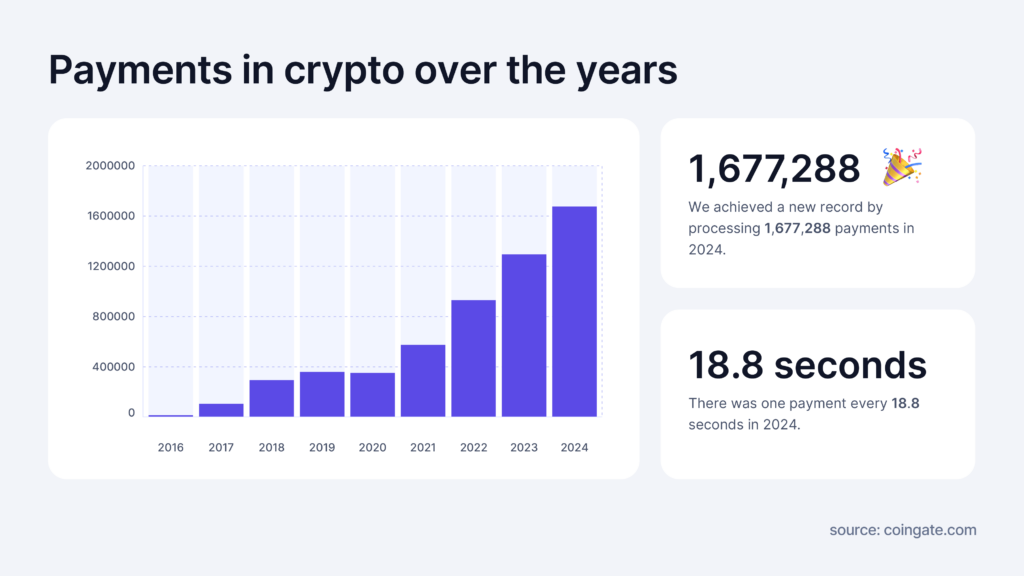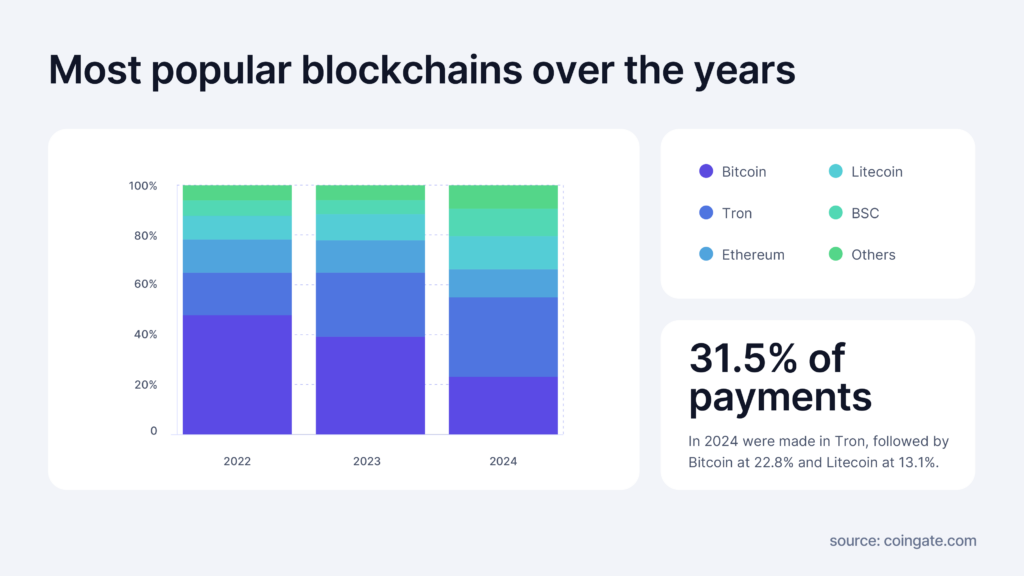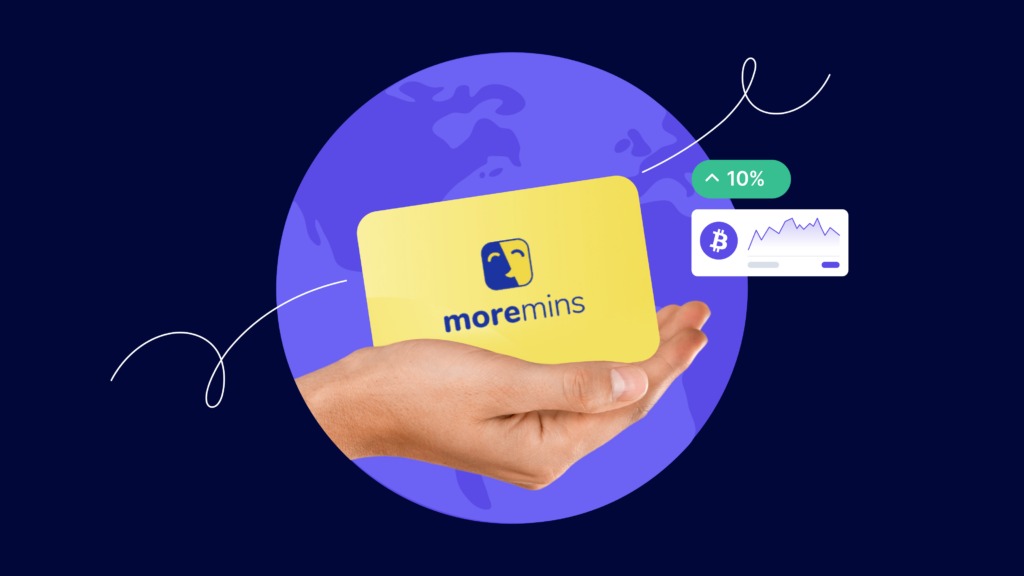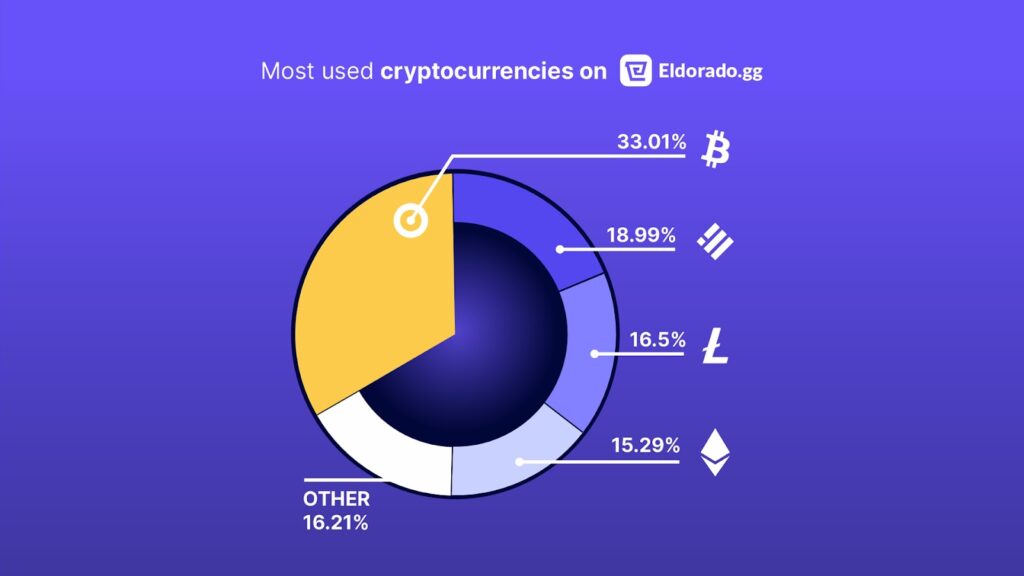
How Many People Will Use Crypto by 2026?

Cryptocurrency adoption has surged from a tiny niche into a global phenomenon over the past decade. What began with just a handful of Bitcoin users in 2009 has exploded to hundreds of millions of users worldwide today.
With millions of new participants joining each year, the crypto ecosystem’s growth raises a pressing question: How far can this expansion go? In particular, how many people will be using cryptocurrency when we enter 2026?
In this article, we examine the historical growth of crypto adoption, explore key drivers behind its expansion, and highlight expert forecasts to see where the industry is headed.
As crypto becomes increasingly integrated into payments, finance, and everyday transactions, this perspective on past growth and future projections will hopefully help businesses, investors, and policymakers stay ahead of the curve.
The Growth of Crypto Users Over the Years
To understand where crypto usage might be in 2026, it’s good to realize how far it has come.
Over the past 15 years, the number of crypto users has climbed in waves, often correlating with market cycles and major technological milestones.

Let’s dissect these cycles into more digestible bits. Below is a brief look at crypto’s adoption journey, broken into key eras:
The Early Days (2009–2012): A Niche Experiment
The cryptocurrency story begins in 2009 with Bitcoin’s launch, when virtually no one outside a small group of tech enthusiasts even knew it existed. In these early days, adoption was minimal – by 2010, fewer than 100 people worldwide were using or mining Bitcoin.
Early adopters were mainly developers, cryptographers, and libertarians experimenting with this new form of decentralized money. By 2012, as awareness slowly spread on forums like BitcoinTalk and Reddit, the global user base was still only an estimated 10,000 to 50,000 people.
Cryptocurrency remained a niche experiment, notable within tech circles but far from mainstream.
The First Boom (2013–2016): Market Cycles and Growing Awareness
Bitcoin’s first major price surge in 2013 – peaking around $1,000 – thrust crypto into mainstream media for the first time. This hype cycle dramatically expanded the user base: by the end of 2013, roughly 1 million people were believed to own or use cryptocurrency.
New exchanges (like the early Mt. Gox) and easier access to Bitcoin helped drive this growth. The momentum was not without setbacks, however.
The 2014 collapse of Mt. Gox (then the largest Bitcoin exchange) dented confidence and temporarily slowed adoption. Even so, innovation continued with the emergence of altcoins and the launch of Ethereum in 2015, broadening use cases beyond Bitcoin.
By 2016, the global crypto user count had recovered and grown to an estimated 10–15 million users. What started as a trickle had clearly become a wave of early adopters by 2016.
Mainstream Awareness (2017–2020): From Hype to Institutional Interest
2017 marked a turning point for crypto going mainstream. Bitcoin’s meteoric rise to nearly $20,000, coupled with the ICO (Initial Coin Offering) boom, brought an unprecedented influx of retail investors. By the end of 2017, the number of crypto users worldwide had surged to roughly 35–50 million. This was a dramatic leap, which shows how price hype and media attention pulled in a new wave of users.
The ensuing 2018 bear market pruned some speculators, but adoption continued to grind upward. Major financial players began entering the space – for example, by 2020 companies like PayPal, Square, and Fidelity were offering crypto services, lending new legitimacy to digital assets.
The COVID-19 pandemic also played a role, as economic uncertainty led more individuals to explore alternative financial systems. By 2020, global crypto users had risen to approximately 150–200 million (with Cambridge study counting about 101 million identity-verified users by Q3 2020). In short, even during down markets, crypto’s user base kept expanding, boosted by increasing institutional interest and real-world use cases.
Mass Adoption (2021–2024): Explosive Growth and Real-World Integration
The years 2021 through 2024 saw explosive growth in crypto adoption, truly cementing the transition from early adopters to mass market. A confluence of factors drove this phase: the NFT craze, the rise of DeFi platforms, corporations like Tesla and MicroStrategy adding crypto to their balance sheets, and even a nation-state (El Salvador) adopting Bitcoin as legal tender.
These years included another bull market in 2021 where Bitcoin hit $69,000, sparking yet another surge in new users. By 2021’s end, estimates placed the global crypto user count somewhere between 300 and 400 million.
Even the bear market of 2022 only tempered the growth rather than reversing it. Adoption persisted via stablecoins (providing a gateway for users in inflation-prone countries) and ongoing Web3 development.
By 2023, as markets began recovering, the worldwide crypto user base was still estimated in the hundreds of millions – roughly half a billion people had now engaged with crypto in some form.
An early 2024 report from Triple-A pegged the number of users around 560–617 million globally, while other forecasts suggested the total could reach as high as ~833 million by the end of 2024.
This remarkable trajectory—from virtually zero users in 2009 to potentially over 800 million fifteen years later—illustrates how crypto has evolved from a curiosity into a significant segment of the global population.
Key Takeaways from Crypto’s Growth Trajectory
Crypto’s user base has grown exponentially – from literally a few dozen users in 2009 to well over 500 million by 2023. It’s an astonishing compound growth, though percentage growth rates are naturally declining as the base gets larger. In other words, adding the next 100 million users is now a smaller percentage gain than it was a decade ago, indicating a maturing market.

Historically, crypto bull runs have triggered the biggest jumps in new users. Hype cycles in years like 2013, 2017, and 2021 each brought waves of fresh adopters into the market. For example, the frenzy of 2017 expanded the user base roughly tenfold in one year. These periods of rapid price appreciation and media attention dramatically accelerate crypto’s reach, as both retail investors and institutions rush in during the excitement.
The expansion of crypto infrastructure – exchanges (Coinbase, Binance, etc.), user-friendly wallets, and now DeFi and fintech integrations – has lowered the barrier to entry for average users. It’s far easier today for someone to buy, store, and use cryptocurrency than it was in the early 2010s. This improved accessibility has been a key driver converting curiosity into actual adoption, enabling the massive user growth we’ve seen.
America and Europe, today’s growth leaders are in emerging markets. Regions like Asia, Africa, and Latin America now drive a significant share of new crypto users. For instance, surveys indicate that in some countries (such as Nigeria) roughly one-third of the population has owned or used crypto, highlighting strong demand where traditional financial systems may be less accessible. This geographic diversification means crypto adoption is truly a global phenomenon, not just a Western trend.
With this historical perspective in mind, we can better understand where things stand today and, more importantly, where they might be headed by the end of 2025. The rapid expansion of the past decade sets the stage for the next question: just how many people are using crypto right now, and how high could that number climb in the coming years?
In the next sections, we’ll examine the current user count and the projections for 2025, drawing on expert analyses and trends to forecast crypto’s continued march toward mainstream acceptance.
How Many Crypto Users Are There Right Now?
Pinpointing exactly how many people use cryptocurrency globally is tricky. There’s no live dashboard giving a precise count because methods for measuring users vary significantly—some count individual wallets, others focus on verified exchange accounts, and many users have multiple wallets or accounts.
However, as of April 2025, industry estimates suggest between 620 million and 650 million active crypto users worldwide, with projections indicating continued steady growth throughout 2025.
However, it’s important to note that these figures aren’t perfect—tracking crypto users involves dealing with data inconsistencies, inactive accounts, and varying methodologies. Nevertheless, the general consensus among experts is clear: crypto adoption continues to expand steadily, even if growth rates have slowed compared to the explosive increases of earlier years.
Here’s how analysts typically measure crypto adoption:
- Blockchain wallet users: Counting active wallets on major crypto platforms (e.g., Blockchain.com).
- Identity-verified accounts: Users who passed KYC (Know Your Customer) processes on regulated exchanges.
- Transaction activity: Users who frequently send, receive, or hold crypto beyond mere speculation.
Despite market ups and downs, crypto’s trajectory remains firmly upward, driven by ongoing innovation and increasing integration into mainstream finance.
Key Factors Driving (or Slowing) Crypto Adoption
Crypto adoption has surged significantly, but its future depends on a complex interplay of factors. Understanding what accelerates or slows adoption can help businesses anticipate trends and position themselves strategically.
Factors Accelerating Crypto Adoption
- Bull Market Cycles: Historically, adoption spikes dramatically during crypto bull markets. Rapidly rising prices attract new users, with previous cycles (2013, 2017, and 2021) bringing exponential user increases—often in multiples within a single year.
- Institutional Investment & Legitimacy: The involvement of trusted financial institutions has significantly increased crypto’s credibility. With Bitcoin ETFs gaining regulatory approval and corporations such as Tesla and MicroStrategy publicly embracing crypto, many investors now view crypto assets as legitimate additions to their portfolios.
- Economic and Political Instability: Regions facing high inflation, banking crises, or currency instability (e.g., Argentina, Nigeria, and Turkey) have seen especially strong adoption rates. Crypto offers a financial alternative when traditional systems falter, making digital currencies particularly attractive during uncertain times.
- Clearer Regulatory Frameworks: Countries providing clear regulatory guidelines have seen increased crypto usage. For instance, nations with transparent tax policies and supportive regulations, such as certain markets in Asia and Latin America, have successfully encouraged crypto growth. MiCA regulation is a huge step forward for crypto in Europe, while the US is also getting ready to provide a clear regulatory framework for all things crypto in the first half of 2025.

- Increased Utility and Real-World Usage: Practical use cases, such as crypto payments, decentralized finance (DeFi), and Web3 applications, have drawn in users looking for tangible benefits beyond speculative investment. Merchants accepting crypto through solutions like CoinGate also reinforce adoption by making crypto a convenient everyday payment option.
Factors Slowing Crypto Adoption
- Regulatory Uncertainty: Unclear or restrictive regulations in some parts of the world continue to hold back broader adoption. Businesses and users hesitate to fully commit without a stable regulatory environment, but this is certain to change in the very near future.
- Security Issues & Scams: High-profile exchange collapses, hacks, and fraudulent schemes (such as the FTX incident) create skepticism. User confidence can be quickly undermined, slowing down adoption.
- Complexity and Accessibility: Although crypto infrastructure has improved dramatically, challenges remain. Managing wallets, private keys, and navigating decentralized platforms still present considerable barriers, especially for those less familiar with technology.
- Market Volatility: Frequent price swings, while appealing to traders, discourage many users looking for stability in their financial assets. Volatility remains a significant hurdle to widespread acceptance for day-to-day financial transactions.
What This Means Moving Forward
Despite these hurdles, adoption continues to trend upward. Businesses that recognize and adapt to these factors—particularly by offering user-friendly solutions, ensuring security, and providing stable, regulated crypto products—will be well-positioned to capitalize on the continued global growth in crypto usage.
With these insights in mind, what does the future hold for crypto adoption by the start of 2026? Let’s explore the expert forecasts next.
What to Expect by the Start of 2026
Predicting exactly how many people will be using crypto by the start of 2026 is challenging.
However, analysts generally agree the user base will continue expanding, driven by evolving technologies, institutional involvement, and global economic conditions.
Optimistic Scenario: Approaching 1 Billion Users
Some industry experts predict that crypto could reach 1 billion users by late 2025. This optimistic scenario isn’t far-fetched, considering historical growth rates.
For instance, crypto adoption maintained an impressive Compound Annual Growth Rate (CAGR) of about 99% between 2018 and 2023. If this pace continues—even at a reduced rate—we could realistically see the crypto user base approach one billion by year’s end.
Several factors could fuel this growth:
- Institutional Adoption: Approval of Bitcoin ETFs, major corporate investments, and increased integration by traditional banks make crypto more accessible and attractive.
- Supportive Regulations: Clear regulatory frameworks in key regions such as Europe, North and Latin America, Africa, and parts of Asia encourage broader adoption by reducing uncertainty.
- Web3 and Crypto Payments: Advancements in technology, coupled with growing merchant acceptance, enhance crypto’s everyday practicality. This includes innovations in blockchain-based apps and more user-friendly wallets.
- Global Economic Uncertainty: Persistent inflation, banking crises, and geopolitical tensions continue pushing individuals towards crypto as a stable financial alternative.
But not everyone agrees on such optimistic growth.
A More Conservative Outlook: 600–900 Million Users
On the cautious side, some analysts foresee slower adoption. They argue that regulatory uncertainties in influential markets (notably the U.S.), along with lingering volatility fears, could keep the user count around 600–900 million by the end of 2025. This range factors in the maturing markets of North America and Europe, where growth rates naturally slow as saturation approaches.
Most Likely Scenario: 800–900 Million Users
Balancing optimism and caution, most expert analyses land between 800 million and 900 million users by 2026. This scenario reflects both the strong underlying drivers of adoption—like institutional involvement and technological advancements—and the realities of regulatory uncertainty and market volatility.
Regardless of the exact number, it’s clear that crypto’s growth is set to continue, transforming it into an integral part of the global financial landscape.
The Connection Between Crypto Users and Crypto Payments
Having millions of crypto users doesn’t automatically mean they’ll actively spend crypto for everyday transactions.
However, there’s a strong correlation between rising adoption rates and increased use of cryptocurrency as a payment method.
How Crypto Payments Are Trending
Recent data clearly illustrates growing crypto payment adoption. For example, our 2024 crypto payments report highlighted a significant increase in transaction volume—up nearly 30%, reaching 1.68 million crypto transactions processed on our platform alone. This indicates that more users aren’t just holding crypto but actively integrating it into their daily financial lives.

Stablecoins have emerged as particularly popular for payments due to their price stability. They accounted for 35.5% of all CoinGate transactions in 2024, with USDT dominating at 97.2% of stablecoin transactions, followed by USDC (2.5%). This preference for stablecoins highlights a shift toward practical, everyday use, moving away from purely speculative activities.
Geographically, crypto payment habits vary significantly. The U.S. remains the largest market, accounting for around 21% of all crypto payments, with Germany (~6.5%) and the UK (5.2–5.7%) following. Emerging markets like Nigeria and Ukraine are also rising fast, suggesting crypto payments are becoming increasingly popular globally.
An interesting shift in user preference emerged in 2024: TRON overtook Bitcoin as the most-used blockchain for payments at CoinGate, reflecting growing consumer demand for cheaper, faster transactions.

What Does This Mean for Businesses?
The steady growth in crypto payments presents a significant opportunity for businesses. With transaction volumes climbing and stablecoins gaining popularity, accepting crypto payments means businesses can:
- Reach a growing global audience of crypto users.
- Provide customers with a faster, cheaper payment method compared to traditional banking and credit cards.
- Reduce transaction costs and chargeback risks, improving profitability.
At CoinGate, we’ve observed firsthand how businesses that adopt crypto payments can attract new customers and boost sales—often seeing a significant spike in customer spending, as our case studies suggest. As crypto adoption continues to rise, we expect this correlation to strengthen further, making crypto an increasingly essential component of successful businesses.
Don’t miss the crypto train and start exploring how you can adopt crypto in your line of work. Start by creating an account at CoinGate.
With this insight, let’s examine CoinGate’s role in facilitating the next stage of crypto adoption and payments.
CoinGate’s Role in Facilitating Crypto Adoption
As crypto continues its rapid expansion, many businesses face a crucial decision: integrating digital payments seamlessly into their everyday operations. We’re here to address this need and provide merchants with a reliable, user-friendly gateway to crypto payments.
How CoinGate Can Help Businesses Accept Crypto Payments
CoinGate offers a comprehensive crypto payment gateway, enabling businesses to effortlessly accept payments in Bitcoin, Ethereum, stablecoins, and more.
Our solutions are built with both simplicity and security in mind, which helps businesses smoothly transition into the evolving digital economy.
Here’s how we support crypto adoption:
- Seamless Integration: Businesses can easily set up crypto payments through intuitive API, ready-made plugins for popular e-commerce platforms (such as WooCommerce, Prestashop, Magento, and others), by using invoicing solutions. This accessibility removes entry barriers and encourages merchants of all sizes to participate in the crypto economy.
- Instant Crypto-to-Fiat Settlements: We automatically convert crypto payments into fiat currencies such as EUR or USD, shielding businesses from crypto volatility. This ensures stability and predictable cash flow.
- Lightning Network Support: Our support for Bitcoin’s Lightning Network enables merchants to accept fast, inexpensive microtransactions, making crypto payments practical for everyday purchases.
- Security & Compliance: CoinGate maintains rigorous security protocols and adheres strictly to the European compliance standards. This allows merchants to confidently accept crypto without worrying about regulatory hurdles or potential security issues.
Real-World Impact: Businesses Thriving with Crypto Payments
Businesses that have integrated CoinGate’s solutions frequently report noticeable benefits.
Here are three standout examples of companies benefiting from CoinGate’s crypto payment solutions:
NordVPN: Expanding Global Reach & Privacy
As a leader in digital privacy, NordVPN embraced crypto payments to better serve its global and privacy-focused audience. After integrating CoinGate:

- Received payments from 176 countries, improving global accessibility.
- Reduced transaction fees to ~1%, avoiding high credit card costs and fraud risks.
- Grew crypto transactions by 13% YoY, showing steady adoption.
- Attracted nearly 900 organic leads via CoinGate’s promotional efforts.
The integration also aligned perfectly with NordVPN’s values, offering customers secure, anonymous, and flexible payment options using popular assets like BTC, USDT, and ETH.
“Accepting crypto helped expand our customer base and accessibility,” — Kestas Saulis, Head of Payments at NordVPN
Find the full case study about NordVPN here.
MoreMins: Standing Out with Privacy-First Payments
In the competitive telecom space, UK-based MoreMins used crypto to differentiate its services:

- Crypto makes up 10% of total transactions, doubling annually.
- 3,300 leads and 1,100 new paying customers were driven by CoinGate’s content marketing.
- Privacy-enhancing payments gave users pseudonymous options and the capability of issuing refunds in crypto.
Their crypto-friendly approach strengthened brand loyalty and tapped into a fast-growing, privacy-conscious customer segment.
“We enhance customer privacy by accepting crypto, and it’s helped us grow faster,” — Andrius Butvilas, CEO of MoreMins
Read more about MoreMins’ success.
Eldorado.gg: Gamers Embrace Crypto Flexibility
In their gaming marketplace, Eldorado.gg empowered its community by offering crypto payments:

- 3% of total sales now come from crypto—a growing stream of additional revenue.
- Easy integration with CoinGate took just one week—even by a junior developer.
- BTC, BUSD, and ETH dominate usage, with Binance Pay emerging as a preferred method.
The convenience and speed of CoinGate’s system enabled Eldorado.gg to cater to a new audience without disrupting their operations.
“Crypto payments simplify our business and give our users more freedom,” — Martynas Iščiukas, Head of Finance at Eldorado.gg
Learn more about Eldorado.gg’s decision to accept crypto payments.
For businesses today, accepting cryptocurrency is becoming more than just an option. By now, it’s a strategic move to attract global customers, lower transaction fees, and differentiate themselves in competitive markets, as evidence suggests.
The Future For Crypto Seems Bright
The journey of crypto adoption—from a niche experiment in 2009 to a global financial phenomenon—is nothing short of remarkable.
Today, crypto is mainstream enough to anticipate nearly 1 billion global users by the end of 2025, even under conservative projections. This sustained growth is evidence that crypto is no passing trend, but an integral part of the evolving financial landscape.
Here’s what businesses and decision-makers should take away:
- Continued Growth: By the close of 2025, the crypto user base is expected to reach approximately 800–900 million people globally, maybe even 1 billion. This represents a significant market opportunity for businesses ready to adapt and engage with crypto users.
- Influencing Factors: Market cycles, institutional involvement, regulatory environments, and practical use cases will continue shaping adoption rates. Companies that proactively navigate these factors will be best positioned for success.
- Real-World Payments: An expanding crypto user base strongly correlates with increased demand for real-world crypto payments. Businesses accepting crypto payments, supported by platforms like ours, can unlock substantial growth opportunities.
Future-Proof Your Business with Crypto Payments
For businesses, the message is clear: the ideal time to embrace crypto payments is now. With a rapidly expanding global user base and enhanced crypto payment infrastructure, the advantages are compelling:
- Lower transaction fees compared to traditional methods.
- Instant cross-border payments, eliminating costly intermediaries.
- Competitive differentiation and access to a vibrant, tech-forward customer demographic.
At CoinGate, we’ve been providing businesses with secure, reliable, and innovative crypto payment solutions for ten years. We helped companies confidently step into the future of finance, and we can help you, too.
Ready to future-proof your business? Create a CoinGate account today and unlock the full potential of cryptocurrency payments.
Accept crypto with CoinGate
Accept crypto with confidence using everything you need in one platform.

